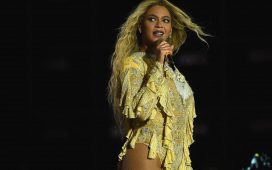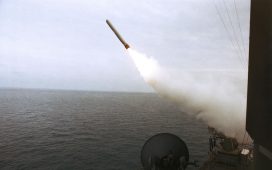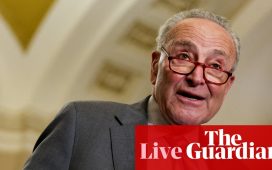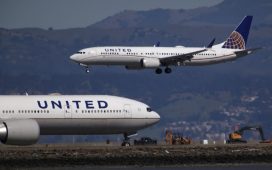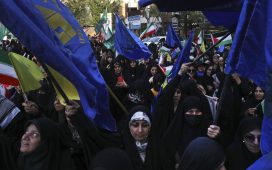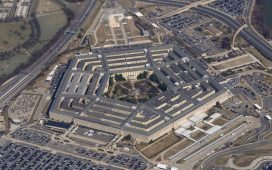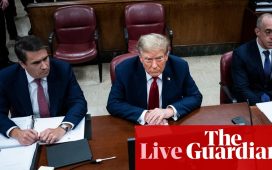Secretary of State Mike Pompeo will push for expanded U.S.-India cooperation to counter China’s economic and military rise when he visits New Delhi on Tuesday, before heading later in the week to join President Trump at the G-20 gathering of world leaders in Japan.
A senior State Department official told reporters on background that Mr. Pompeo will seek to overcome friction on trade and other issues, including Indian weapons purchases from Russia, as he pushes for stronger, big-picture strategic ties with New Delhi.
“We have a solid foundation to build on,” said the official, who spoke on condition of anonymity of the common bond between the world’s two largest democracies, stressing a “unique” chance currently at hand — roughly a month after nationalist Indian Prime Minister Narendra Modi won a second five-year term.
Mr. Pompeo will meet with Mr. Modi and hold talks with newly-tapped Indian Minister of External Affairs S. Jaishankar, whom the Trump administration views as “one of the visionaries behind the expansion of the U.S.-India Strategic Partnership,” the senior state department official said.
“We want to seize this moment early in [Mr. Modi’s] second administration,” the official added, asserting that “India is a crucial partner in the Trump administration’s vision for a free and open Indo-Pacific region.”
Mr. Pompeo had also been slated to stop in Sri Lanka to a show of solidarity with Christians there, who were targeted by jihadist suicide bombers on Easter Sunday. But officials said the stop has been cancelled due to “unavoidable scheduling conflicts,” putting India visit center stage ahead of the G-20 in Japan later in the week, as well as a visit Mr. Pompeo and Mr. Trump will then make together to South Korea.
Tapping private investment
In India, Mr. Pompeo is expected to tout the administration’s vision for stronger unilateral partnerships across the region. Last year, the secretary of state announced $113 million worth of new U.S. funds to lay a foundation for future investments in the areas of digital economy, energy and infrastructure.
“These funds represent just a down payment on a new era in U.S. economic commitment to peace and prosperity in the Indo-Pacific,” Mr. Pompeo said last July.
Speculation has swirled during the year since over the administration plans for drumming up private, Western-aligned investment to counter massive Chinese government-backed loans flowing into the region — loans the White House has characterized as “predatory.”
Analysts say a key challenge will be countering Beijing’s influence within the Asia-Pacific Economic Cooperation (APEC) forum, a key and established multilateral organization, of which China is a member.
Deputy Assistant Secretary of State for Energy Diplomacy Sandra Ourkirk told an audience this week at the Center for Strategic and International Studies (CSIS) that developing countries in the Indo-Pacific region need some $1.7 trillion for infrastructure investment.
She suggested Washington’s plan will center on the so-called “BUILD Act,” which lawmakers passed and Mr. Trump signed into law last year to streamline U.S.-backed development finance capabilities into a new agency, the U.S. International Development Finance Corporation.
“The new law consolidates, modernizes and reforms the U.S. government’s development finance capabilities,” Ms. Oudkirk said. “This expansion of the U.S. toolkit to mobilize private sector investment will fuel more growth opportunities in the Indo-Pacific.”
Peter Raymond, a senior analysts at CSIS, said the region will have to choose between industrial policies, like China’s Belt and Road initiative, and free-market policies that allow for greater private-sector participation. “When private economics work competitively, when you have an ability to compete for projects and mobilize finance in an efficient way, you get a more efficient outcome, you get projects that are more sustainable over time, [and] you get higher quality projects,” Mr. Raymond said at a recent event hosted by the think tank.
Mr. Pompeo is expected to push a similar message in New Delhi, where he’ll likely also address the delicate issue of friction in the U.S.-India bilateral trade relationship. His visit comes amid White House frustration over what it calls protectionist posturing by the Modi government and less than a month after the administration moved to end preferential trade treatment for India.
“[I] hope that our friends in India will drop their trade barriers and trust in the competitiveness of their own companies, their own businesses, their own people, and private sector companies,” Mr. Pompeo said in a June 12 speech at the annual U.S.-India Business Council meeting hosted by the U.S. Chamber of Commerce.
Tanvi Madan, a regional scholar at the Brookings Institution, said in an analysis published by the think tank on Friday that while the U.S.-India relationship has “progressed steadily on many fronts, a number of problems have arisen.”
“Some stem not from bilateral issues, but from U.S. policies targeting other countries,” Ms. Madan wrote. “Indian interests have been adversely affected by the American withdrawal from the Paris climate change agreement, aluminum and steel tariffs, and the change in the U.S. approach in Afghanistan that has led to talks with Taliban (which India remains highly skeptical, if not concerned about). Add to that list Washington’s sanctions on oil imports from Iran and Venezuela, both of which have been major Indian suppliers.”
But other developments, in the security realm particularly, suggest India and the U.S. are moving significantly closer together vis-a-vis countering China, which has spent years building up bases in the disputed waters of the South China Sea and has been sending submarines and warships to far-flung China-financed ports in Sri Lanka and Pakistan.
Indian security hawks argue New Delhi should be sending a message to China by more deeply engaging in Naval operations beyond the Indian Ocean — more toward Chinese-claimed waters near East Asia — through joint exercises with the U.S. and others.
That’s just what happened in May, when, for the first time ever, the Indian Navy joined warships from the U.S., Japan and the Philippines in a week-long show of naval power against China, steaming an international armada through contested waterways in the South China Sea claimed by Beijing.
The Washington Times Comment Policy
The Washington Times welcomes your comments on Spot.im, our third-party provider. Please read our Comment Policy before commenting.

